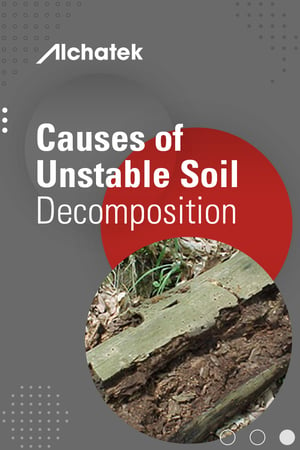
 When the residue of plants or animals is converted into soil, the process is known as decomposition. Bacteria, fungi, and worms break down this residue, taking nutrients from them and leaving the remaining portion. Organic molecules are broken down into simpler inorganic molecules. This biological process changes the makeup of the soil and can therefore lead to soil instability.
When the residue of plants or animals is converted into soil, the process is known as decomposition. Bacteria, fungi, and worms break down this residue, taking nutrients from them and leaving the remaining portion. Organic molecules are broken down into simpler inorganic molecules. This biological process changes the makeup of the soil and can therefore lead to soil instability.
What are the causes of decomposition?
When soil has a high concentration of organic materials, the soil will naturally begin to decompose. Throughout this process of decomposition, the mass and form of these organic materials will change. Up to 90 percent of organic material will actually disappear over the course of the decomposition process, which means the mass of the soil will decrease substantially, reducing the quantity of available soil. The causes of decomposition can be broken into two main groups: manmade and natural. Trash pits or buried construction debris can cause manmade decomposition, while tree stumps and peat content can cause natural decomposition.
What are the signs of decomposition?
Sinkholes, unstable soil, and low spots are all indications of soil decomposition. When soil begins to decompose and shift, it can compromise the integrity of buildings, foundations, and other manmade structures.
How can decomposition be addressed?
In some cases, it is possible to dig up the cause of decomposition. For example, it might be possible to extricate a trash pit or old construction debris from the soil. However, in other cases, this simply isn’t feasible. You can’t easily extricate a trash pit after you have already built on top of it. If removal isn’t an option, the best solution is to envelop the area with polyurethane soil stabilization material. This process is known as encapsulation, and it essentially works to compact the area and reduce the amount of oxygen and water that can get to it, thereby helping to slow decomposition.


